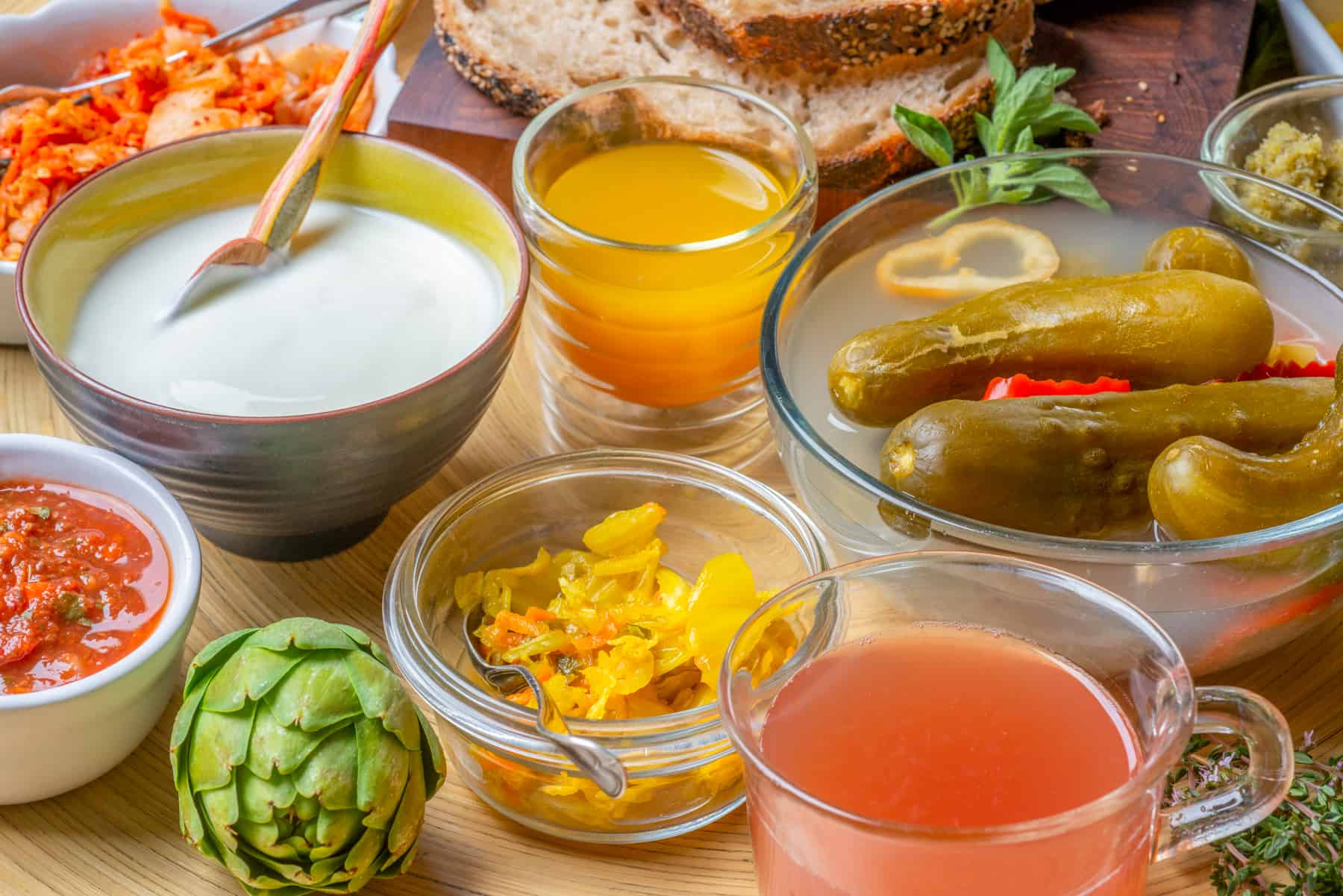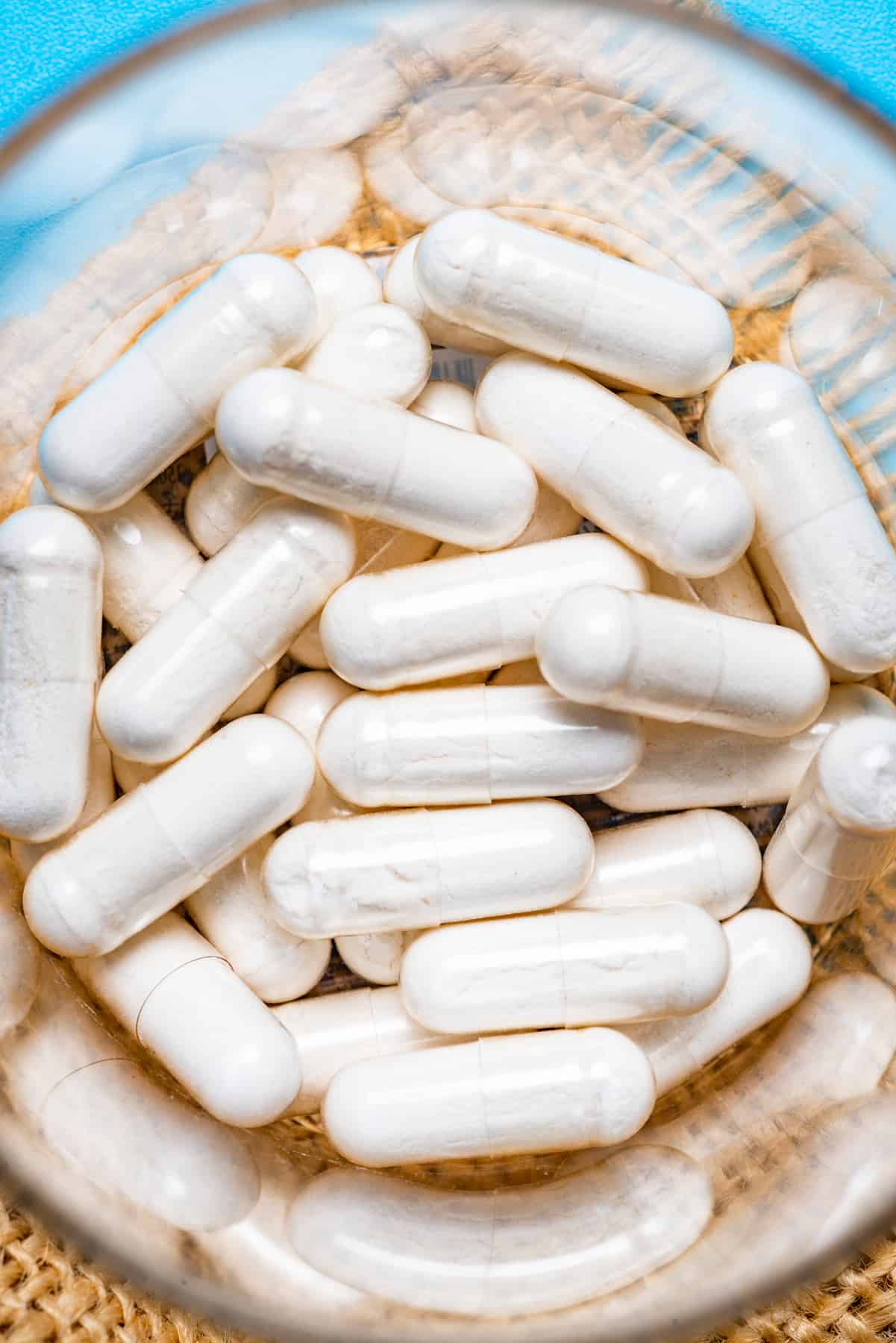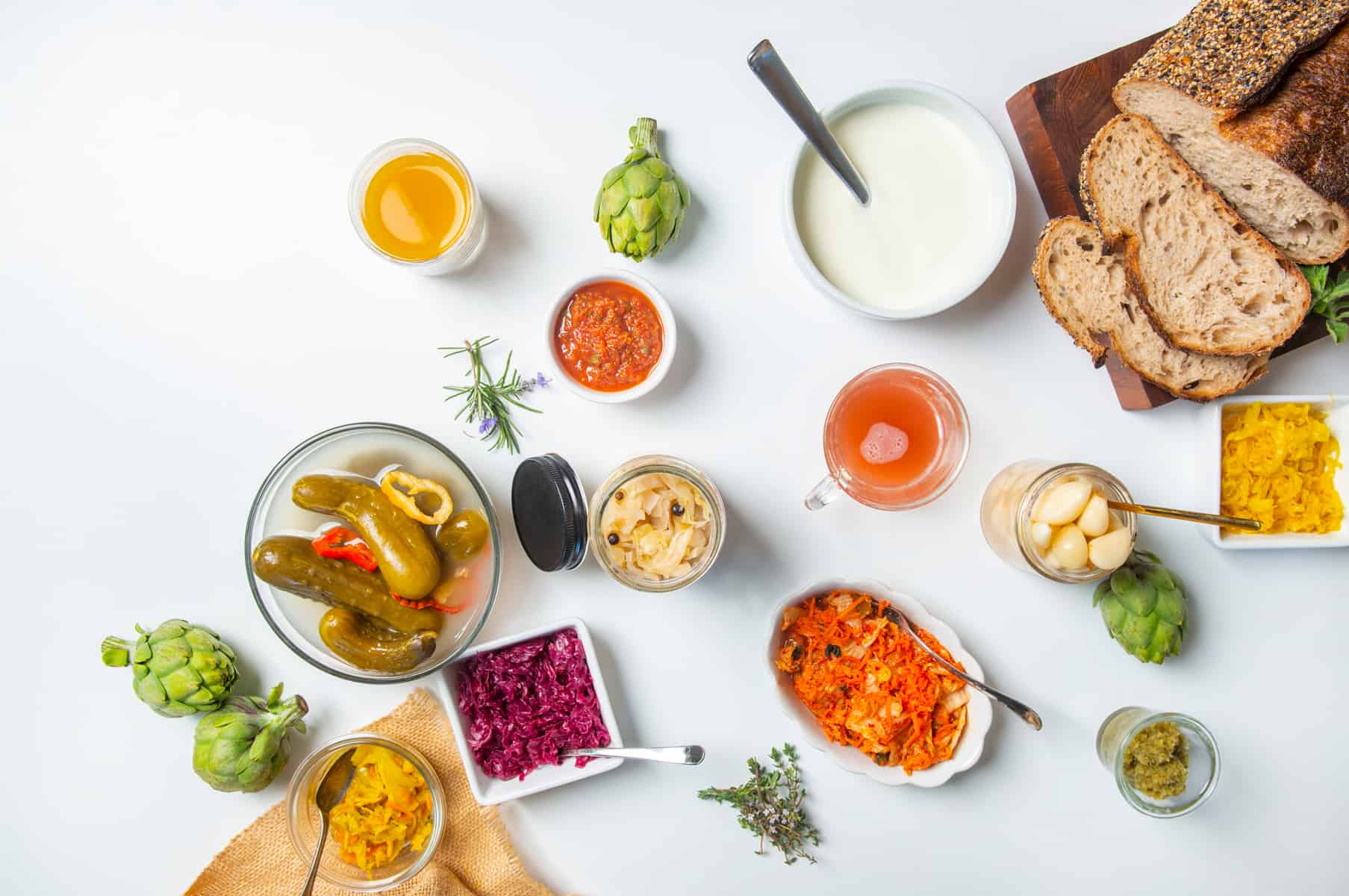Written and Photographed by Paulette Phlipot
—
Bacteria is often sensed as harmful—associated with dirt, germs, and other microorganisms that can make you really, really sick. And this can be true. Certain pathogenic bacteria can make you sick, but not all of these bugs are harmful. In fact, we’ve been told that optimal health is equated with the number of good bacteria that reside in our guts. These “good guys” encourage proper digestion and absorption of nutrients, while helping ward off disease.
Beneficial bacteria is not only found in our guts (aka, “the gut microbiome”), it is also found on our skin and in our mouths. Eating processed food and sugar can reduce and weaken the number of good bugs in our microbiome, allowing the bad bugs to take over and health issues to creep in. Some health professionals believe that an unbalanced microbiome can lead to all sorts of chronic health problems such as asthma, eczema, autoimmune diseases, autism, ADHD, anxiety, and depression. Harnessing the power of beneficial bacteria—in the form of fermented foods and supplements—(while not new news) can help outnumber the bad bugs in and on our body, helping us achieve ideal health.
Grocery store shelves are lined with products proudly and colorfully claiming “probiotic” properties on their labels. And with a well-known track record of benefits, it’s no wonder why major manufacturers are wanting to capitalize on this success. Even big-brand boxed tea companies have started to add good bacteria to their tea bags. If only being healthy was as easy as just sitting back and drinking a cup of tea …
In order to truly benefit from adding good bacteria to your diet, it’s important to understand the whole picture (and the scientific lingo that goes with it). What do the terms probiotics, prebiotics, and postbiotics really mean? And how do you know if you’re getting the right bacteria strain?

Put the Pre- Before the Pro-
Well, it’s common knowledge that the word “probiotics” refers to good bacteria. Probiotics are present in many foods, primarily those that are fermented, like yogurt, kimchi, sauerkraut, and kefir. In Jackson, Poa Jacobsen Van Sickle’s entire business, Daily Roots, is based on probiotic foods. However, new to the spotlight is the concept of feeding the good bacteria already residing in our gut. To do so requires including “prebiotics” and “postbiotics” in our diet. This is not something you need to worry about, however, as you are probably consuming pre- and postbiotics already. And if not, it’s easy to incorporate them.
Non-digestible carbohydrates (named prebiotics) can be found in fruits, vegetables, nuts, seeds, and whole grains. Good bugs thrive on this type of dietary fiber derived from food. This means eating more prebiotic fiber can aid in the growth of beneficial bacteria. Dr. McKenzie Steiner, a licensed Naturopathic Medical Doctor (NMD) weighs in with some guidance.
“Prebiotics include foods, such as berries (especially blueberries), bananas, apples, onions, garlic, mushrooms, cabbage, beans, like chickpeas and lentils, and whole grains, like oats, flax, and wheat,” says Dr. Steiner. “Also, [most] quality probiotic supplements usually include prebiotics, too.”
Some practitioners believe that if you eat a diet rich in fermented foods and prebiotic fibers, supplementing with pre- and probiotics isn’t really necessary. But Dr. Steiner notes that most of the packaged fermented food sold in the grocery store undergoes pasteurization at high heat, killing both the beneficial and non-beneficial probiotics.
“I recommend fermenting your own food or finding a reliable source locally at a farmers market,” she says. “Some companies also add in probiotic strains after pasteurization.“

If fermented foods aren’t your jam, there are many forms of supplemented probiotics to choose from. So many that it can get really confusing. Most probiotic supplements contain bacteria from two genera: lactobacillus and bifidobacterium. These specific probiotics strains are helpful for addressing specific health conditions. Therefore, choosing the right type—or strain—is essential to combating your own specific health concern.
“Saccharomyces boulardii [also known as baker’s yeast], is helpful in preventing the antibiotic associated diarrhea related to clostridium difficile [a bad guy] infection,” explains Dr. Steiner. “I always recommend taking a probiotic that contains saccharomyces boulardii while taking antibiotics, and it’s important to take the probiotics and antibiotics at separate times of the day, in order for the probiotics to have the most benefit. … After finishing an antibiotic prescription, I also recommend taking a high potency probiotic, with multiple beneficial strains, for three to six months afterward to help your microbiome recover.”
Akkermansia muciniphila, a new keystone species (a species which has a disproportionately large effect on its natural environment) has created a lot of hype and excitement. It is said that low akkermansia levels can cause gastrointestinal distress, as well as fundamental issues with metabolism, inflammation, and immune response. Getting a stool test is the best way to discover what strains of bacteria you may be low on. Replenishing levels of akkermansia has been known to pivot many health issues, allowing the healing process to begin.
But What About the Post-?
Postbiotics are compounds created when the beneficial bacteria flourishing in our digestive tract leaves behind waste from digesting prebiotics. This beneficial waste includes things that enhance our health, like cell components, peptides, and short-chain fatty acids. Prebiotics, probiotics, and postbiotics all interact together; they need each other to complete the successful digestive cycle. You can think of it like this: prebiotics are the power for the probiotics (the workhorses), which create the postbiotics, an end goal for optimal health.
“Research is showing that even if we have a ‘bad gut,’ that doesn’t mean our own gut flora is gone. It just hasn’t been allowed to flourish.”
— Babs Melka, PharmD
Postbiotic supplements that contain these vital “end products” are marketed and available, but early-stage research has not yet confirmed supplementation is even necessary. Eating fermented foods should assure their consumption, as foods containing probiotics also include postbiotic byproducts. Examples of postbiotic rich foods include oats, flaxseed, sourdough bread, seaweed, kimchi, tempeh, and yogurt.
Spores from the Earth
So, eating fermented foods is the key to capitalizing on good bugs, right? But what about the times when you need an additional boost? Maybe you’ve been traveling or eating on the run and your gut just needs a little reconditioning.
Babette Melka, Doctor of Pharmacy (PharmD) and women’s health consultant based out of Teton Valley, Idaho, supports the use of spore-based probiotics (soil-based microorganisms that are formed from spores found in dirt and vegetation) for an extra boost. Spore-base probiotics are introduced to the gut in the form of dormant bacteria spores. This delivery method makes them extremely stable and resistant to stomach acid’s low pH, resulting in better proliferation.
“Research is showing that even if we have a ‘bad gut,’ that doesn’t mean our own gut flora is gone. It just hasn’t been allowed to flourish,” says Melka. “Re-inoculating [the gut] with a blend of good probiotics isn’t necessarily the key. Rather, the ‘bad’ needs to be down regulated. The optimal therapy to accomplish this is with the correct blend of spore-forming bacteria to give the best results.”
Melka reminds us that 70 percent of our immune system resides in our gut, and that there is a strong correlation between the gut and the brain. So, when we ingest a supplement, it has to first make it to the destination, and then it has to have the correct ingredients to give the desired effect. That said, not all supplement and nutraceutical companies are created equal.
“Probiotics are extremely sensitive to their environment, pH in particular,” she adds. “Spore-forming probiotics are soil-based microorganisms that possess the ability to surround themselves with durable coats of protein, allowing them to survive in hostile environmental conditions. … This results in the delivery of more viable probiotics to the small intestine where they then revert to active, growing bacteria.”
In Melka’s perspective, the objective is to recondition the gut instead of reseeding it with probiotic strains that may not survive the digestion process anyway. She touts a spore-forming bacillus blend from MicroBiome Labs, as it’s been thoroughly researched and proven to recondition the gut.
Eating habits, stress, and antibiotic use can negatively affect the microbes in our gut. Replacing the strains through fermented food, and working with a health professional to supplement correctly, can get you on the path to feeling better. Make time and room on your plate every day to integrate more good bugs.

